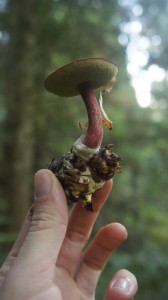On January 16, I will be leaving for a one-year exchange with Uppsala Universitet in Sweden. The university is the oldest in Sweden, founded in 1477, and is located in the vibrant student-oriented city of Uppsala. Now that finals are over, the reality of the situation has had time to sink in, and I can admit my excitement.
 I have been accepted into the CEMUS program, a program dedicated to all aspects of sustainable development. It will be extremely interesting to participate in very specific courses related to my field of study, including Project Management in Sustainable Development, and Sustainable Design. The other aspect of studying in Sweden that I am looking forward to is the way in which classes are taught sequentially, rather than concurrently like at UBC. This allows for students to focus 100% of their energy on a single subject, rather than divided between five subjects. To me, this makes so much sense that it is hard to think of why we have a different approach to education here in Canada.
I have been accepted into the CEMUS program, a program dedicated to all aspects of sustainable development. It will be extremely interesting to participate in very specific courses related to my field of study, including Project Management in Sustainable Development, and Sustainable Design. The other aspect of studying in Sweden that I am looking forward to is the way in which classes are taught sequentially, rather than concurrently like at UBC. This allows for students to focus 100% of their energy on a single subject, rather than divided between five subjects. To me, this makes so much sense that it is hard to think of why we have a different approach to education here in Canada.
Having heard much about the Swedish culture from family and friends, I cannot help believe that this is where I was meant to be. So much of my personality, from my initially shy demeanor to my love of saunas, stems from my Swedish roots.
Having been built nearly 500 years ago, the University itself is beautiful and steeped in tradition. In the mid 1600’s the 13 student nations were formed, which are one of Uppsala’s most unique and appealing features. Every student must join one of the nations, which are spread across campus containing pubs, libraries, meeting spaces and housing while organizing events for members. Every day of the week there is an event held by at least one nation, creating a lively nightlife and ensuring the long swedish winters do not get the better of any student.
I eagerly await my arrival in Uppsala, but there is still lots to do before I go!


